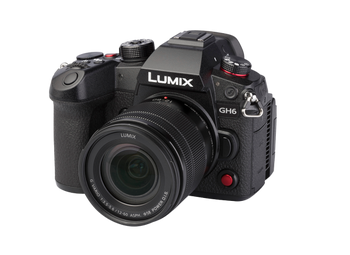- Compact and lightweight
- Excellent image quality
- Stabilized video
- User-friendly controls
- High-speed shooting
- Exceptional video quality
- High frame rate options
- Stabilized footage
- Durable construction
- Flexible touchscreen
- Limited battery life
- APS-C sensor may not suit all
- Heavier than competitors
- Micro Four Thirds sensor size
Fujifilm X-T4 vs Panasonic Lumix GH6
The world of photography has witnessed a significant shift towards mirrorless cameras, offering unparalleled flexibility, compactness, and exceptional image quality. Two notable contenders in this realm are the Fujifilm X-T4 and the Panasonic Lumix GH6. Both cameras have garnered attention for their impressive features, performance, and versatility. In this comparison, we'll delve into the key aspects of these mirrorless cameras to help you decide which one best suits your needs.
Sensor and Image Quality
The Fujifilm X-T4 boasts a 26.1-megapixel APS-C X-Trans CMOS 4 sensor, which delivers outstanding image quality with excellent color accuracy, dynamic range, and low-light performance. On the other hand, the Panasonic Lumix GH6 features a 25.2-megapixel Micro Four Thirds sensor, which also provides impressive image quality, although some may argue that it lags slightly behind the X-T4 in terms of resolution and low-light capabilities.
Autofocus and Speed
Both cameras excel in autofocus performance, but they differ in their approaches. The Fujifilm X-T4 employs a hybrid autofocus system with 425 phase-detection points, offering fast and accurate subject tracking. In contrast, the Panasonic Lumix GH6 utilizes a Depth-from-Defocus (DFD) technology, which provides quick and precise focusing, especially in video mode. However, the X-T4's autofocus system might have a slight edge in terms of speed and accuracy, particularly when shooting stills.
Video Capabilities
The Panasonic Lumix GH6 is renowned for its exceptional video capabilities, making it a favorite among videographers. It can record 5.7K at 60p, 4K at 120p, and even offers 10-bit 4:2:0 internal recording. The Fujifilm X-T4, while not as video-centric, still delivers impressive footage with its ability to record 4K at 60p and 10-bit 4:2:2 external output. Although the GH6 has a more comprehensive set of video features, the X-T4's video quality is still excellent, making it suitable for various applications.
Stabilization and Ergonomics
Both cameras feature in-body image stabilization (IBIS), which helps reduce camera shake and blur. The Fujifilm X-T4's IBIS system provides up to 6.5 stops of compensation, while the Panasonic Lumix GH6 offers up to 7.5 stops. In terms of ergonomics, the X-T4 has a more traditional SLR-like design, with a comfortable grip and intuitive controls. The GH6, on the other hand, has a slightly more angular design, but its larger grip and well-placed buttons make it easy to handle.
Additional Features
The Fujifilm X-T4 and Panasonic Lumix GH6 both offer a range of features that cater to different needs. The X-T4 includes a vari-angle touchscreen LCD, a built-in flash, and improved weather sealing. The GH6, meanwhile, boasts a higher-resolution viewfinder, dual SD card slots, and enhanced connectivity options like USB-C and Wi-Fi.
Conclusion
In conclusion, both the Fujifilm X-T4 and Panasonic Lumix GH6 are exceptional mirrorless cameras that excel in various areas. The X-T4 is ideal for stills photographers who value excellent image quality, fast autofocus, and a traditional camera design. The GH6, on the other hand, is better suited for videographers and content creators who require advanced video features, excellent stabilization, and a robust set of connectivity options.
Ultimately, the choice between these two mirrorless cameras depends on your specific needs and preferences. If you prioritize stills photography and value a more traditional camera design, the Fujifilm X-T4 might be the better choice. However, if you're focused on video production or require a camera with advanced features and connectivity options, the Panasonic Lumix GH6 is an excellent option.


















